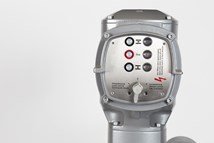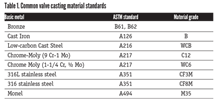The International Market: Trade and Its Effects on U.S. Recovery
Although the nation began pulling out of the recession in about the middle of 2009, by the time of VMA’s Market Outlook Workshop in mid-August, the growth that started in 2009 had slowed down, a development that was more noticeable here in the U.S. than overseas, according to Gary Schlossberg (pictured), senior economist for Wells Capital Management.
#VMAnews
However, “the flip side of that is that the U.S. has shared in the recovery of the global economy,” Schlossberg said, because of the lift to export growth.
One of the major reasons this recession has not rebounded as quickly as other troubled economic times is because—unlike in the 1980s—credit availability, rather than its cost (i.e., interest rates), has been the problem, leading businesses to liquidate investments, hoard cash and cut back on spending. Banks, on the other hand, are still cautious. Also, when concerns about the debt situations in Greece, Portugal, Spain and other countries hit, the problems spilled indirectly into this country, which created further uncertainty. All of this has had a rippling effect and credit to the trade areas has suffered, he explained.
And unlike some other recoveries, prices will not be going up as quickly. “Inflation won’t be coming back in a big way soon because the global economic environment is so much more competitive,” he said. Labor costs, which on average are two-thirds of the cost of doing business, are where businesses in the U.S. will be focusing, and they face stiff competition from countries where labor costs less. Wage and hiring restraints are limiting income growth, Schlossberg said, one of the main reasons why consumer spending has been unusually subdued.
Still, he said several indicators coming out at the time of the workshop showed that purchasing power overall is picking up speed. Low mortgage rates, although they have not resulted in a rise in home sales, have started to have an effect on refinancing activity, which is increasing household cash flow and spending power. And orders in manufacturing from U.S. plants are feeling the effects of pent up demand—equipment orders for both high- and, to a lesser extent, low-tech machinery have picked up substantially, Schlossberg said. Capacity spending in the U.S. has seen record low levels with this recession, but even though businesses are not yet adding capacity, they are replacing worn-out equipment, a good sign that things are getting better, he said.
FORECAST: Growth rates in typical recoveries are about 4% or more, but Schlossberg predicted a growth rate in the U.S. of about 2.5% for 2010 and about 2.5 to 3% for 2011.
RELATED CONTENT
-
CASE STUDY: Stainless-steel Piping Solutions for Remote Mine Sites
Stainless-steel piping has a long history on mine sites. The robust, corrosion-resistant material is ideal for mine process piping systems that are designed to provide a long service life.
-
Solenoid Valves: Direct Acting vs. Pilot-Operated
While presenting in a recent VMA Valve Basics 101 Course in Houston, I found myself in a familiar role: explaining solenoid valves (SOVs) to attendees. (I work with solenoids so much that one VMA member at that conference joked that I needed to be wearing an I Heart Solenoids t-shirt). During the hands-on “petting zoo” portion of the program, which involves smaller groups of attendees, one of the most frequently asked questions I get from people came up: What’s the difference between direct-acting and pilot-operated SOVs, and how do we make a choice?
-
An Interview With ... Matt Thiel
Matt Thiel, president of AUMA Actuators, was named chairman at VMA’s 2022 annual meeting.







 Unloading large gate valve.jpg;maxWidth=214)


